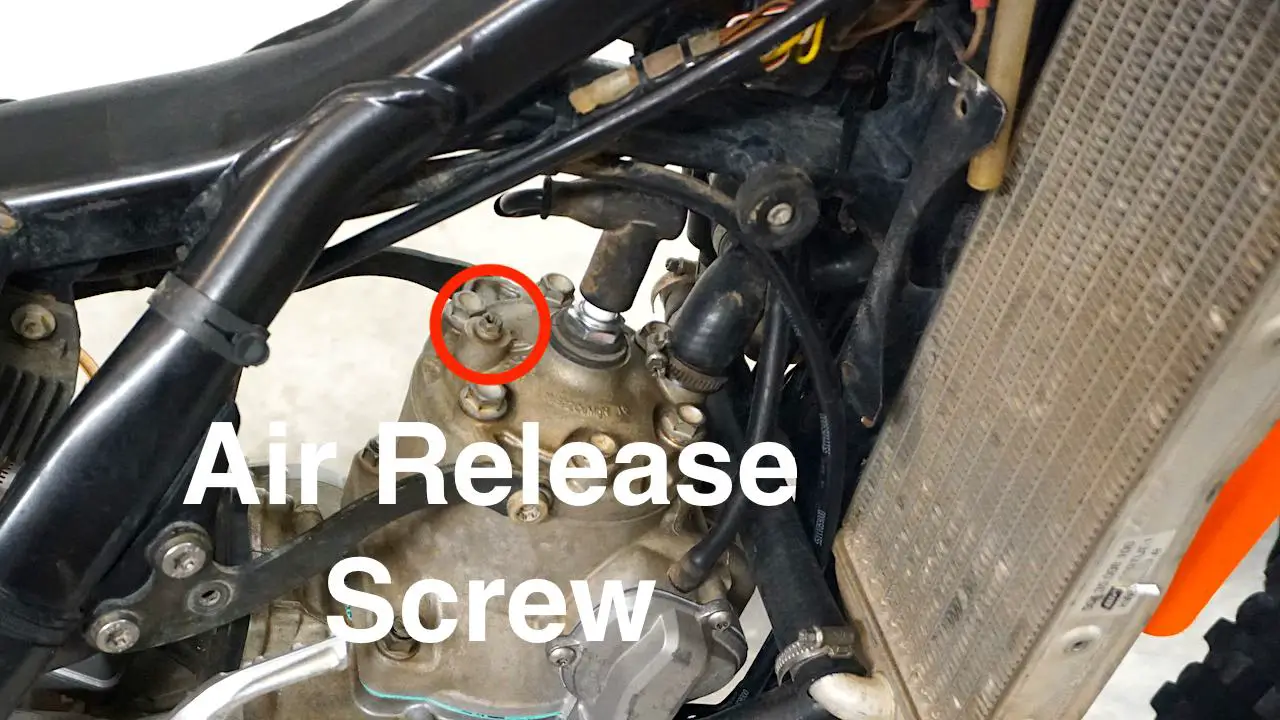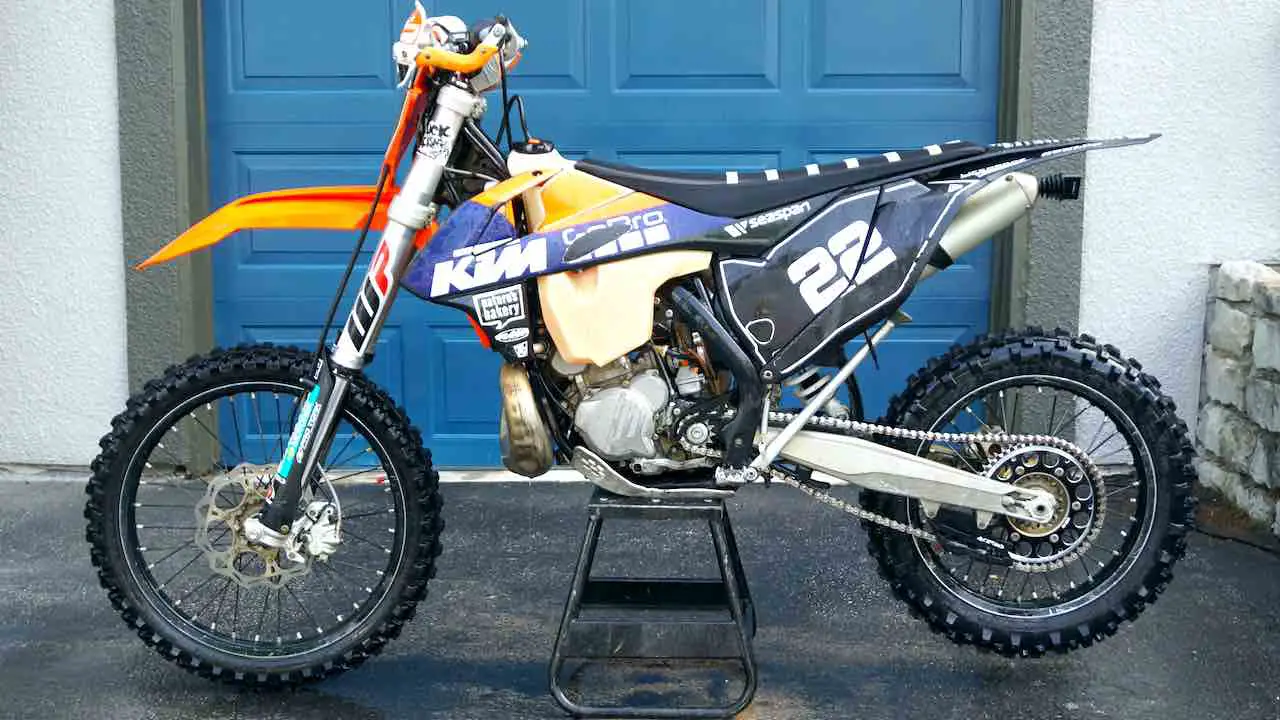Dirt bike coolant is an essential fluid that helps regulate the temperature of your dirt bike’s engine.
It’s important to regularly check and maintain the coolant level to prevent dirt bike overheating, which can cause serious damage to the engine. The dirt bike coolant needs flushing periodically, especially if you experience overheating or radiator leaks.
In this guide, we will explain how to replace the dirt bike coolant, with step by step instructions. We’ll cover everything from the tools you’ll need, to the type of coolant that’s recommended for your bike, and the proper way to flush and refill the system.
Learning how to change your bike’s coolant is a valuable skill that can save you time, money, and headaches in the long run.
So, let’s dive in and get started on this important maintenance task for your dirt bike.
In this article, we will cover:
By following these five easy steps, you will be able to flush the dirt bike coolant like a pro!
This post contains affiliate links. If you use these links to buy something we may earn a commission at no additional cost to you. As an Amazon Affiliate we earn from qualifying purchases.

Tools Required for Flushing Dirt Bike Coolant
There are no special tools required to flush the old radiator coolant.
You may need to replace few of the hose clamps or hoses if you have a leak, but in most cases a new engine coolant and regular tools should suffice.
You can also use an oil drain pan such as this one linked here or similar to catch the old coolant as it will be messy.
Best Coolants for Dirt Bikes
The purpose of the dirt bike coolant is to protect the motor from freezing temperatures and dirt bike overheating.
Based on dirt bike enthusiast out there, we collected the top 3 best coolants available for dirt bikes for you to choose from. In our experience, the Engine Ice is easiest to use, and protects the dirt bike from overheating very effectively.
| Dirt Bike Coolant | Price | Pros | Where to Buy |
|---|---|---|---|
| Evans Coolant | $$$ | No water, very high 375F boiling point, much less pressure build up. | Check on Amazon.com |
| Engine Ice | $$ | 256F boiling point, biodegradable, | Check on Amazon.com |
| Maxima Off-Road Coolant | $ | Ready-to-use formula, boiling point: 285F | Check on Amazon.com |
Best Coolant for a 2 Stroke Dirt Bike
The best coolant for a 2 stroke dirt bike is Engine Ice. It protects the dirt bike from overheating very well because of the high boiling point.
Engine Ice is a propylene glycol coolant solution that has relatively high boiling point of 256F. It is premixed with distilled water(deionized water) which means that you can add water to the solution if you ever need to refill it.
Most two stroke dirt bikes are trail oriented. Having to refill coolant out on the trails from a water source or from your hydration backpack, means that the Engine Ice will remain its cooling performance until you can flush the system with free coolant.
Best Coolant for a 4 Stroke Dirt Bike
The best coolant for a 4 stroke dirt bike is Evans Coolant.
The reason why we chose the Evans coolant, is because it has an impressive boiling point of 375F. We all know that modern 4 stroke dirt bikes run very hot and they frequently over heat, especially in low air flow conditions such as technical trail riding.
The Evans Coolant is also 100% water free, which means that it builds up much less pressure when heating up. The waterless solution eliminates water vapor and this lower pressure means long lasting radiator and hose life.
How To Change Dirt Bike Coolant in 5 Steps
Flushing the dirt bike coolant is a simple process that usually takes less than an hour to complete. If you have any issues with overheating or have any leaks, you should check the system for leaks and flush the old coolant.
Step 1: Clear Space To Access the Radiator Main Hoses
Flushing the old dirt bike coolant can be performed without removing the gas tank and usually without removing the exhaust head pipe on a two-stroke dirt bike.
However, the process will be much easier and quicker if you remove the gas tank, side plastic panels, and the head pipe so that you will be able to inspect for any leaks and also easily air out the system.

If you simply wish to flush the old dirt bike coolant, you can access the lower radiator hose and flush the coolant without having to remove the gas tank or exhaust pipe.
However, when you need to inspect for leaks or make sure the system is working properly and to make the flushing easier, we recommend removing the gas tank, side plastic panels, and the exhaust pipe in two-stroke engines for easier access.
Step 2: Flush Old Dirt Bike Coolant Into a Drain Pan
Place the drain pan under the dirt bike so that you can catch the old dirt bike coolant.
Next, open the lower hose clamp located near the right side of the engine next to the power valve. Some models may have a drain plug near where the lower radiator hose connects to the engine.

Let the old dirt bike coolant drain completely. You can also slightly rock the dirt bike left to right to get the most of the old dirt bike coolant out. You can also open the fill cap so that the old coolant flows out quicker.

The left side radiator is connected to the right side with a connecting hose, so there is no need to touch other hoses to drain the dirt bike coolant completely.
Step 3: Refill With New Dirt Bike Coolant
Reconnect the lower radiator hose and tighten the hose clamp. At this point, you can inspect all the hoses and hose clamps for any cracks or leaks and replace them if necessary.
Next, refill the system with new dirt bike coolant. Open the fill cap and pour slowly until the you can see the coolant level reach the top of the radiator fins inside the radiator.
Some of the best dirt bike coolants are Engine Ice and Evans Coolant. Check the previous chapter for more details and information about best dirt bike coolants.
Step 4: Bleed the Dirt Bike Radiator
Knowing how to bleed dirt bike radiator is important. When you flush the system or have a leak, air will get trapped into the coolant system and it needs to be aired out.
To bleed the dirt bike radiator and coolant system, open the small screw on top of the cylinder head slowly to release any trapped air in the dirt bike coolant system. Open it slowly until you can hear air hissing out and the coolant starts seeping through the threads. It is not necessary to open it completely since it causes dirt bike coolant to leak over the engine making a smelly mess when the motor heats up.

Continue refilling the dirt bike coolant until the coolant level sets at the top of the fins inside the right side radiator.
Step 5: Warm Up the Dirt Bike and Check Dirt Bike Coolant Level
After reinstalling the gas tank and the plastic side panels, start and warm up the engine.

Wait for the engine to cool down until it is safe to open the refill cap to inspect the dirt bike coolant level. If you aired it out properly, the coolant level should remain at the top of the fins.
Do not open the coolant cap while the coolant is hot and under pressure as it will spill out and burn you skin.
Frequently Asked Questions (FAQs)
Here are some common questions we often get asked about dirt bike coolants.
Why is coolant replacement important for a dirt bike?
Coolant replacement is essential to maintain proper engine temperature and prevent overheating. It helps dissipate heat, lubricates the water pump, and prevents corrosion, ensuring optimal engine performance and longevity.
How often should I replace the coolant in my dirt bike?
The frequency of coolant replacement varies depending on the manufacturer’s recommendations and usage conditions. Generally, it’s recommended to replace the coolant every 1 to 2 years or as specified in your dirt bike’s owner’s manual.
Can I use any coolant in my dirt bike?
It’s crucial to use the coolant specified by the manufacturer or a compatible coolant that meets the required specifications. Using the wrong type of coolant can lead to cooling system issues or damage to engine components.
How do I replace the coolant in my dirt bike?
To replace the coolant, start by draining the old coolant from the radiator and engine block. Then, flush the system with water, ensuring all remnants of the old coolant are removed. Finally, refill the system with the recommended coolant mixture, following proper ratios and bleeding any air from the system.
Are there any specific precautions to take when replacing coolant?
When replacing coolant, make sure the engine is cool to avoid burns. Follow safety precautions, such as wearing gloves and eye protection. Also, properly dispose of the old coolant according to local regulations, as it is toxic and harmful to the environment.
Conclusions
In this guide, we’ve explained step-by-step how to change the dirt bike coolant, from draining the old coolant to filling the system with fresh coolant.
We’ve also shared some tips on selecting the right coolant and how often to replace it. By following these simple instructions, you can easily change the coolant on your dirt bike and keep it running at peak performance.
Don’t let a faulty coolant system ruin your off-road adventures, take the time to properly maintain your bike and enjoy the ride. With the right knowledge and a little bit of effort, you can ensure your dirt bike stays cool and ready for any challenge.
If you ride hard enduro or slow and very technical trails, boiling over can be an issue. You might want to consider installing a radiator fan to increase airflow in slow speeds. In that case, make sure to read our article on how a dirt bike radiator fan keeps your dirt bike cool.
Keep your bike running cool out there! And make sure to keep yourself riding cool too with our tips for the best dirt bike gear for hot weather!
Read next:
